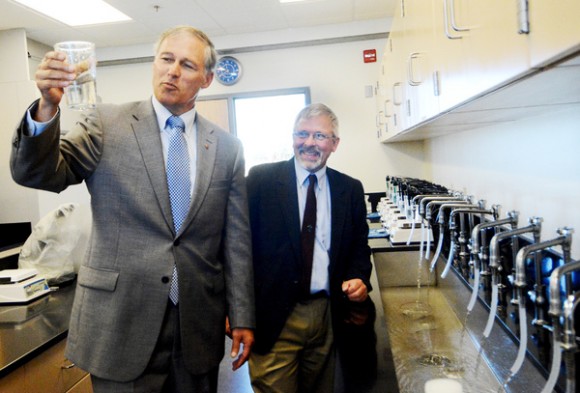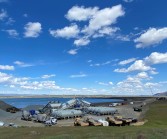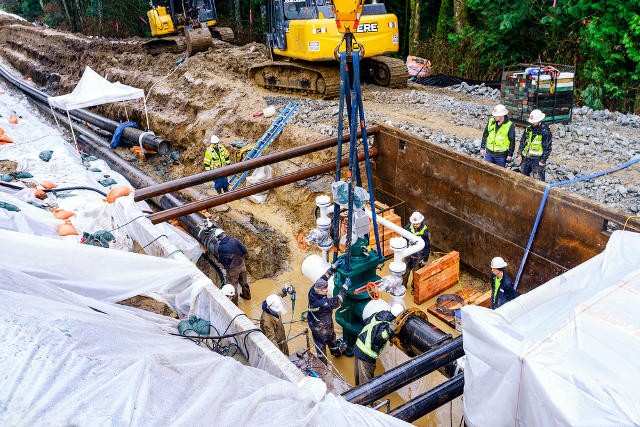Gov. Inslee tours Anacortes water plant
GOSKAGIT.COM, By Mark Stayton

MOUNT VERNON — Gov. Jay Inslee toured the city of Anacortes’ new water treatment plant Tuesday to see an example of how local governments are practically addressing the effects of climate change.
The $56 million facility on Riverbend Road in Mount Vernon was completed in March 2013, replacing a 43-year-old facility that was prone to flood damage.
The new treatment plant features a host of design elements that protect vital machinery and electronics from flooding, as well as an efficient filtration system that can handle a projected increase in Skagit River’s sediment load.
[[{"attributes":{},"fields":{}}]]
“It’s really refreshing to see a local community just making practical, common sense, scientifically engineering-driven decisions rather than ideological issues,” Inslee said.
“To me it’s an inspiring example of how if you just focus on science and what it means in your machinery, you get things done.”
Anacortes Public Works Director Fred Buckenmeyer said his eyes were opened to startling information about the effects climate change might have on his facility in 2009 while the project was being planned.
At a meeting of the Skagit Climate Science Consortium, Buckenmeyer said he learned more rain and less snowfall is expected in the Skagit watershed over the next 60 years, though precipitation levels are predicted to stay steady.
He said he relied on the research of Tarang Khangaonkar and Eric Grossman of the consortium for the most current and accurate predictions of how climate change might impact the river.
For the plant, climate change means flooding will likely be spread throughout the year at increased intervals.
Buckenmeyer said the Skagit River is expected to see the highest increase in sediment load of all Western Washington rivers over the next 60 years.
Plant manager Jamie LeBlanc said the old plant had all critical equipment, such as chemical feed systems and electrical systems, on the first floor or below ground — making them susceptible to floods. The clear well, which holds clean water, was also below ground.
“To complicate things, we have a ring dike around the facility, which turned into a giant bath tub in case of flooding,” LeBlanc said.
In the new plant, all critical equipment is positioned above the 100-year flood plain. Buckenmeyer said anything below ground in the new plant is watertight like a ship — encased in thick waterproof material.
The old facility’s filtration system was rated to process 20 million gallons of water per day, but was handling 29 million gallons per day at the end of its life cycle, Buckenmeyer said.
Using a new ACTIFLO system in the new plant improves the filtration capacity to 54 million gallons of water per day while decreasing the size of the filter’s footprint, Buckenmeyer said.
“We were embarking on building a large facility, an expensive facility,” Buckenmeyer said. “I didn’t want to waste people’s money and have to replace it or remodel it in 50 years. It’s going to be here for a while.”
— Reporter Mark Stayton: 360-416-2112, [email protected], Twitter: @Mark_SVH,Facebook.com/byMarkStayton



